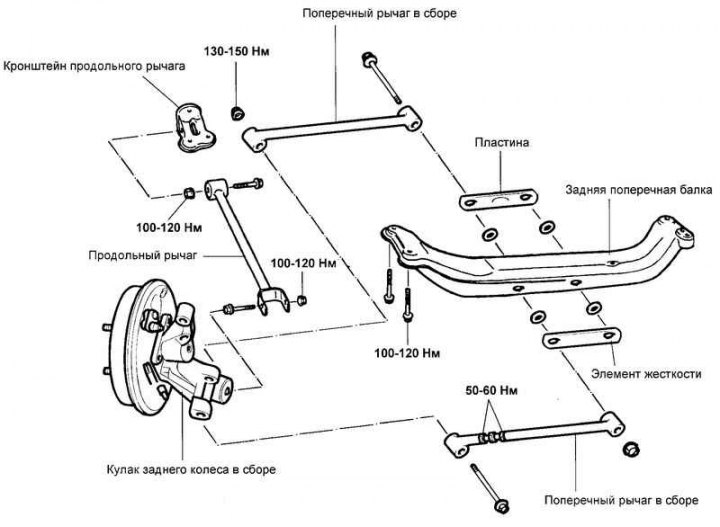
Pic. 4.51. Trailing arm rear suspension
Withdrawal
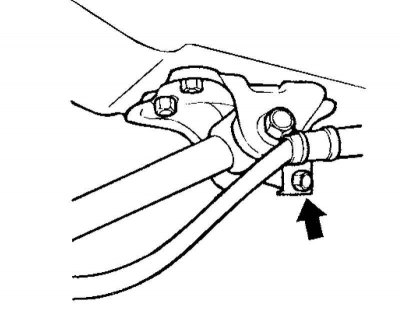
Pic. 4.52. Parking brake cable
Disconnect the parking brake cable from the rear trailing arm bracket (pic. 4.52).
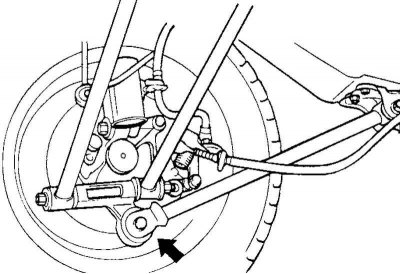
Pic. 4.53. Bolt of fastening of the cross-section suspension arm
Remove the bolt securing the transverse suspension arm to the rear wheel knuckle (pic. 4.53).
Support the rear cross member by placing a jack under its center section, then remove the cross member to body bolts.
Remove a back cross beam together with cross-section suspension arms.
Replacing the trailing arm bushing
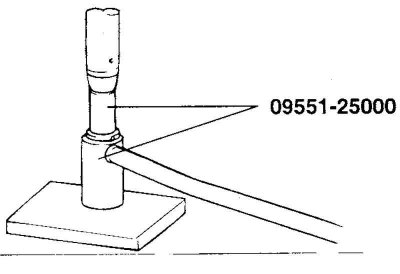
Pic. 4.54. Installing the special tool on the trailing arm
Install special tool (09551-25000) on the trailing arm (pic. 4.54).
Remove the trailing arm bushing.
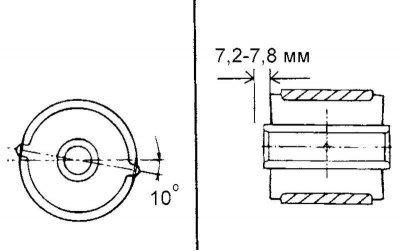
Pic. 4.55. Pressing a new bushing into the trailing arm
With a special tool (09551-25000) press the new bushing into the trailing arm (pic. 4.55).
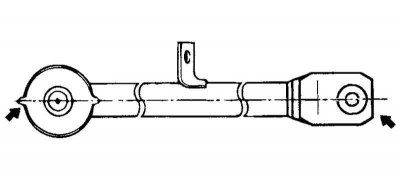
Pic. 4.56. The location of the sleeve relative to the lever
Note. Press in the sleeve, placing it relative to the lever, as shown in Figure 4.56.
Transverse Arm Bushing Replacement
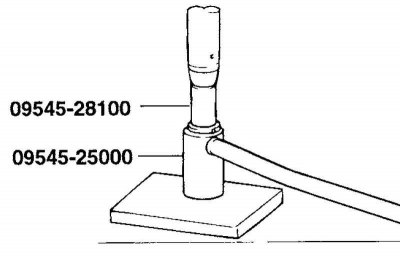
Pic. 4.57. Installing the Special Tool on the Wishbone
Install special tool (09545-28100 and 09545-25000) on the transverse arm (pic. 4.57).
Remove the transverse arm bushing.
Wet the contact surfaces of the bushing and control arm with soapy water.
With a special tool (09545-25000) press the new bushing into the control arm.
Replacing the rear anti-roll bar
Disconnect the stabilizer links from the rear suspension strut.
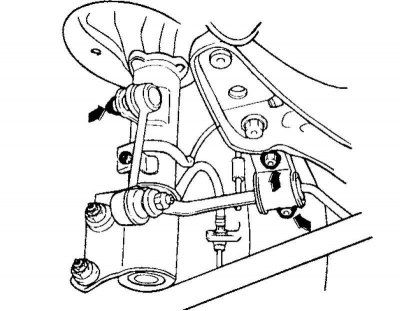
Pic. 4.58. Removing stabilizer mounting brackets
Remove the stabilizer mounting brackets (pic. 4.58).
Remove the anti-roll bar.
Examination
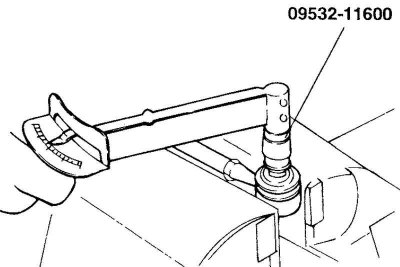
Pic. 4.59. Checking the moment of rotation of the ball joint of the stabilizer strut
Check the torque of the ball joint of the stabilizer bar (pic. 4.59).
If the ball joint boot is cracked or torn, replace it and add grease to the ball joint.
Rock the stabilizer bar ball joint pin a few times.
Screw the self-locking nut onto the ball joint pin and then measure the torque of the pin.
Rated value: 3.5 - 4.0 Nm.
If the torque exceeds the upper limit of the nominal value, replace the stabilizer link.
If the torque is less than the lower limit of the nominal value, then the ball joint is considered fit for further use, as long as there is no jamming and excessive clearance in the joint.
